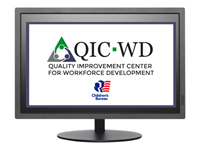Child Welfare Quality Improvement Center for Workforce Development (QIC-WD)
Date of this Version
3-13-2019
Document Type
Article
Abstract
Oklahoma’s Quality Improvement Center for Workforce Development Steering Committee has decided to refine the selection process for new child welfare workers as part of their ongoing commitment to hiring a dedicated, talented workforce and supporting that workforce in practice with children, youth, and families. The committee spent much of 2018 doing a thorough needs assessment and exploration of their child welfare recruitment and retention challenges. Through this process they recognized that interviewing strategies and hiring decisions are made inconsistently across the state. The team acknowledged that this could result in the selection of individuals who are not the best fit for the role of Child Welfare Specialist. Suboptimal hiring can potentially lead to premature turnover or substandard performance on the job. In turn, this can place added stress on child welfare teams and units, compounding the strain on the system. To address this problem, Oklahoma is embarking on the development and implementation of a standardized, competency-based selection process. The desired outcomes of the competency-based selection process include: • Newly hired staff are a better fit for their role • Staff have higher job satisfaction, better performance, and increased retention • Supervisors are able to spend more time developing high-potential workers and less time managing workers who are not a good fit for the role • Teams exhibit greater self-efficacy and proficiency in case work practice • Staff experience improved workload balance • Families experience increased continuity of effective case practice • Children and families experience gains in safety, permanency, and well-being To design the competency-based selection intervention, Oklahoma is conducting an indepth job analysis to better define optimal performance and the characteristics required to perform the child welfare job well. The job analysis process includes interviews and surveys with the experts of the job: the workers and supervisors themselves. This analysis will guide the development of a tailored selection strategy for Oklahoma’s child welfare workforce. Once developed and implemented, the evaluation will help Oklahoma and the field better understand: 1. The traits and competencies that should be present at the time of hire in order for a job candidate to be successful in doing child welfare work. 2. How competency-based and standardized selection procedures affect worker proficiency, confidence, job satisfaction, commitment to the agency, and intention to stay. 3. How increasing the number of staff who are a better fit for their positions and more likely to stay could reduce stress on existing employees and agency wide turnover. 4. How an increase in staff who are a better fit to child welfare work and decreased turnover can improve outcomes for children and families.
Included in
Industrial and Organizational Psychology Commons, Performance Management Commons, Public Policy Commons, Social Welfare Commons, Social Work Commons, Training and Development Commons

